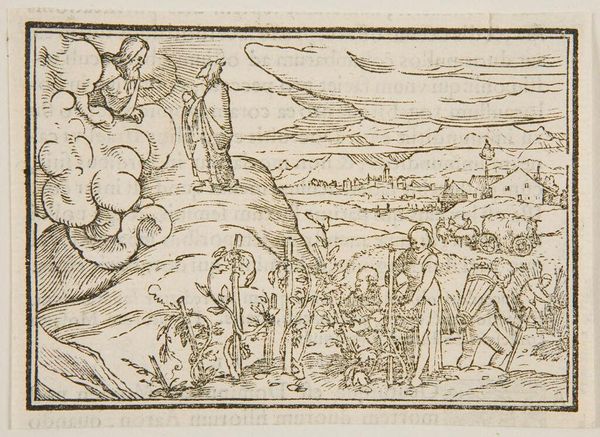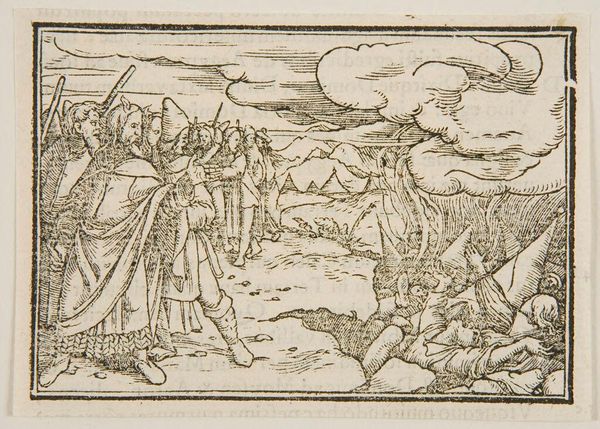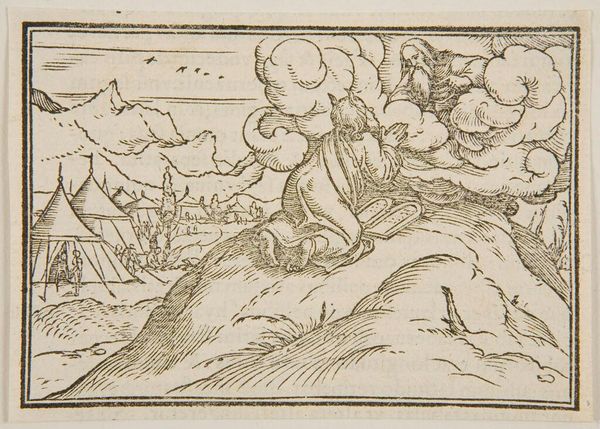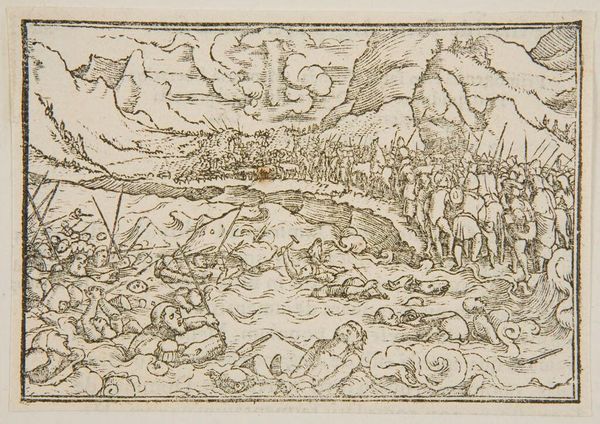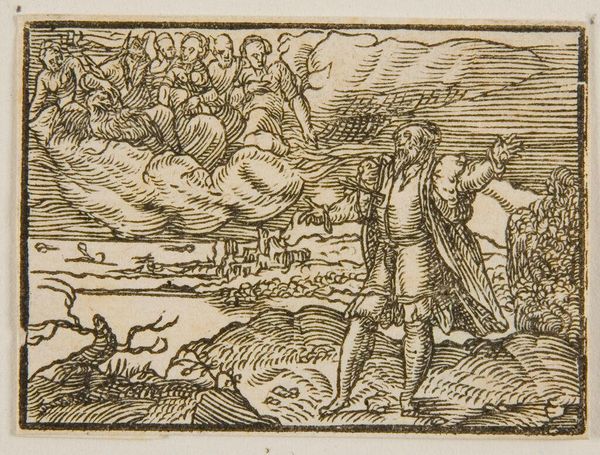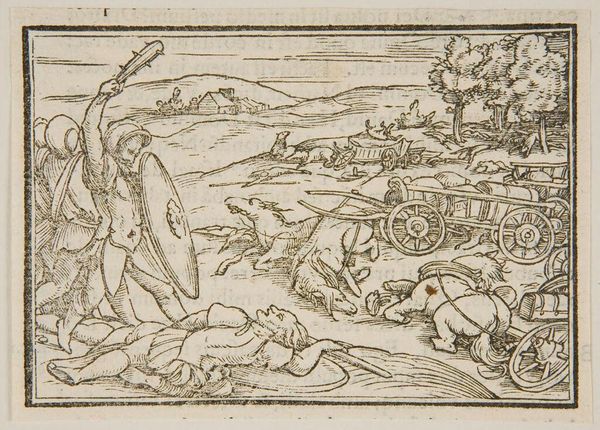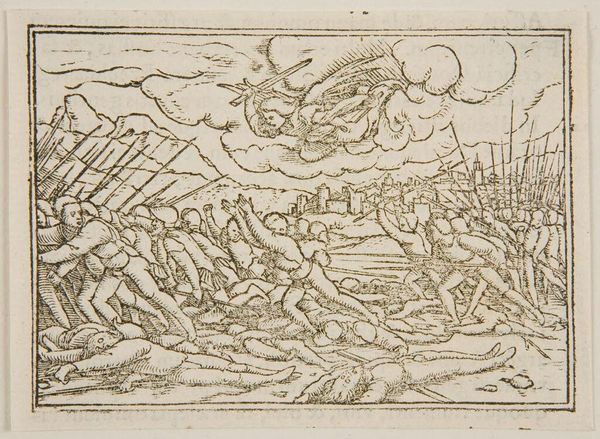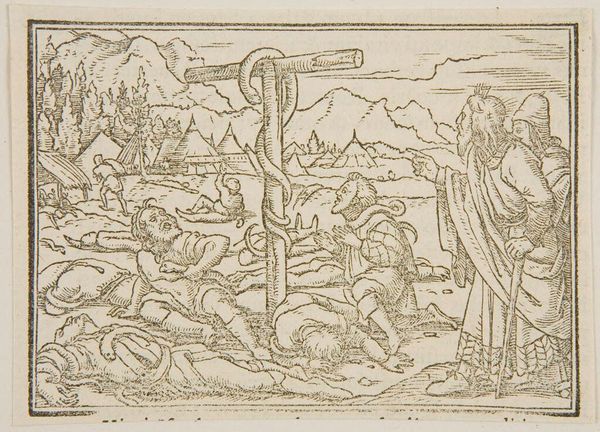
Copyright: CC0 1.0
Curator: This is Hans Holbein the Younger's "Lev. VIII," currently residing at the Harvard Art Museums. It’s fascinating how the artist employs such precise lines to convey form. Editor: My first impression is one of dramatic supplication. The scale seems to amplify the feeling of humility before a divine power. Curator: Indeed. Holbein’s use of black and white amplifies the contrasts. Note the figure kneeling on what seems to be a promontory, set against the softness of clouds, and the hard geometry of the tents below. Editor: The kneeling figure seems to represent Moses, and of course, we have God in the clouds. This moment likely captures a critical juncture in the narrative of Leviticus. The camp below seems unaware of the sacred encounter above. Curator: Precisely. The interplay of textures creates depth and a certain dynamism that animates what could be a static religious scene. Editor: It's a powerful visual representation of divine encounter and earthly existence, all captured in a striking composition. Curator: A masterful study in form and texture, Holbein offers an engaging snapshot of the biblical narrative. Editor: And a potent reminder of the emotional and cultural weight carried by religious imagery throughout history.
Comments
No comments
Be the first to comment and join the conversation on the ultimate creative platform.

